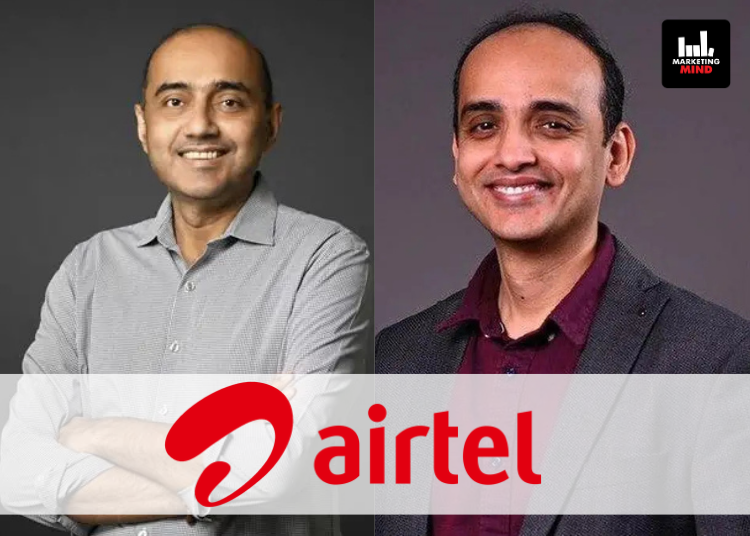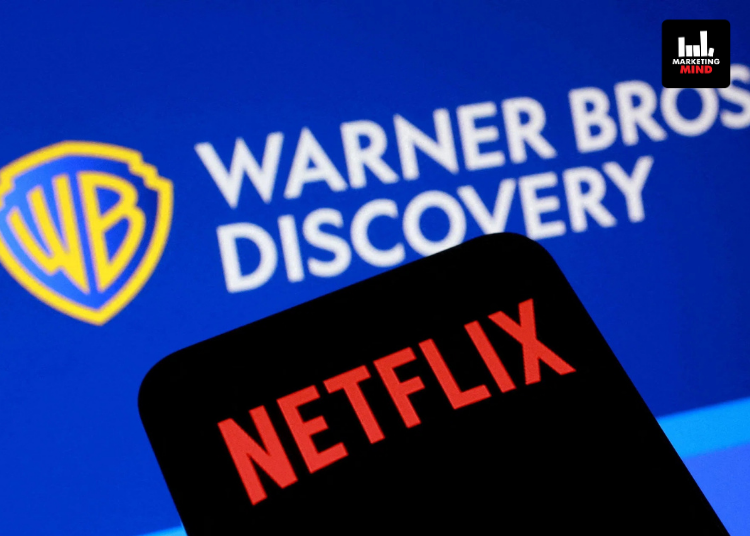In the Indian OTT market, Disney+ Hotstar and JioCinema together command around one-third of the market share, spanning both subscription and ad revenue, Karan Taurani, SVP, Elara Capital, said. He emphasised that if these platforms were to merge, it could create substantial challenges for smaller players, making it difficult for them to expand their market presence. On the flip side, advertisers stand to benefit significantly from this potential consolidation, particularly as advertising spend on TV has been coming off.
Reliance Industries (RIL) is reportedly planning a significant shift in its streaming strategy. Following the planned merger with Star India’s Disney+ Hotstar, RIL may focus on consolidating its streaming services into a single platform.
Despite Disney+ Hotstar’s larger user base, RIL is considering merging its content with JioCinema to create a unified, stronger platform. This strategic move is intended to streamline content delivery, reduce costs, and strengthen its competitive edge against other streaming services.

In an exclusive conversation with Marketing Mind, Taurani discussed the potential merger’s ability to disrupt India’s OTT landscape, its implications for the competitive strategies of existing giants like YouTube, Netflix, and Amazon Prime Video, as well as the challenges, opportunities, and future prospects for advertisers.
Taurani, while discussing how the potential merger between JioCinema and Disney+ Hotstar could significantly alter the dynamics of India’s OTT landscape, said that in the Indian OTT market, the combined market share of Disney+ Hotstar and JioCinema stands at approximately one-third, encompassing both subscription and ad revenue. This significant share positions them as a major disruptor. Their dominance extends across various facets, including content variety. They control about 80% of the sports content in the market and over 40-50% of catch-up TV content.
“Additionally, they have access to extensive global catalogues, including Disney and HBO. Despite their substantial content assets, JioCinema and Disney+ Hotstar’s combined revenue is currently around ₹6,000 crores, factoring out the negative impact of IPL on Disney+ Hotstar. I think this can easily grow by 30% on a CAGR basis for the next three years given the kind of variety of content that they have,” Taurani said.
“Although the market is fragmented with numerous small players, we will likely observe a shift in ad dollars toward major platforms such as YouTube, which already commands a significant share, approximately $1.5 billion of the digital advertising market. Similarly, larger players like JioCinema and Disney+ Hotstar are expected to capture a growing portion of the market. Consequently, smaller players may face challenges and struggle to expand their market presence,” he added.
On being asked, with JioCinema and Disney+ Hotstar potentially merging into a single entity, how might this change the competitive strategies of existing OTT heavyweights like YouTube, Netflix, and Prime Video in India, Taurani highlighted that YouTube, as an aggregator of user-generated content (UGC), is likely to remain largely unaffected by competitive shifts. Unlike other platforms, YouTube’s emphasis on UGC content positions it as relatively resilient to negative impacts. In contrast, subscription-based platforms like Netflix and Prime Video are not expected to experience significant negative effects either. These platforms offer a diverse range of global content and currently do not engage in ad-based revenue models, focusing solely on subscriptions.
“JioCinema, however, presents a different scenario. The platform derives over 90% of its revenue from advertisements, with only a small portion coming from subscriptions. As a result, it is unlikely to see a negative impact from changes affecting subscription-based models,” he said.
“Nonetheless, global OTT platforms may face challenges, as they might need to invest more in content, which could drive up costs. Players such as JioCinema and Disney+ Hotstar offering extensive content libraries, may negatively impact plans of global OTT platforms to raise subscription prices and match up to JioCinema’s content variety. Given the abundance of free or low-cost content, increasing average revenue per user (ARPU) could be particularly difficult. Consequently, global OTT platforms might experience losses while navigating these challenges, impacting their overall financial performance,” he added.
While discussing the challenges and opportunities in integrating the user experiences of JioCinema and Disney+ Hotstar into a single platform, Taurani pointed out that the opportunity here is significant. Disney+ Hotstar, with its urban-focused content, including TV shows, originals, sports, and global Hollywood content, provides a distinct user base. In contrast, JioCinema’s broad appeal, driven largely by IPL viewership, has attracted a massive audience. With monthly active users exceeding 300-400 million, JioCinema’s platform benefits from this extensive traction.
“The integration of JioCinema and Disney+ Hotstar is expected to be advantageous due to their large customer bases. The main challenge will be ensuring that JioCinema matches the user experience offered by Disney+ Hotstar, particularly for live sports, where any technical issues or streaming delays can be detrimental,” Taurani said.
“If JioCinema successfully replicates Disney+ Hotstar’s user experience, it could position itself as a strong competitor to YouTube. Currently, YouTube’s scale is approximately twice that of JioCinema and Disney+ Hotstar combined. Consequently, JioCinema and Disney+ Hotstar will need to make significant progress to compete with YouTube, potentially impacting smaller players and redistributing market share within digital advertising, including search and social media segments,” he added.
Furthermore, he went on to say that both Disney+ Hotstar and JioCinema exhibit formidable strengths in content control, each excelling in different areas. Disney+ Hotstar’s primary strength lies in its sports coverage and extensive catalogue of catch-up TV content. Star’s dominance across regional and Hindi genres enhances its appeal, complemented by a robust selection of global content, including Marvel movies and various originals.
Conversely, JioCinema’s major asset is its exclusive IPL content and other sporting properties, which bolster its appeal significantly. Additionally, JioCinema partners with multiple channels, broadening its content variety and depth compared to Disney+ Hotstar. Both platforms are thus equally strong in their content diversity.
“Both Disney+ Hotstar and JioCinema have the potential to attract large user bases, possibly reaching 500 million Monthly Active Users (MAUs) and rivaling YouTube in terms of user engagement and time spent. The key to their success lies in offering an extensive range of content on a single platform. This approach can streamline costs related to content, technology, distribution, and marketing. Excluding IPL costs, there is potential for both platforms to achieve break-even or even profitability within the next 2-3 years in their non-IPL businesses. The likelihood of reaching break-even for IPL-related expenses remains low over the next three years due to the substantial investment required,” Taurani mentioned.
He also explained how post-merger, the combined user base of JioCinema and Disney+ Hotstar could impact subscriber acquisition and growth strategies for the new platform.
Taurani stated, “Regarding subscriber growth projections, it is anticipated that, in a stable scenario, a combined platform could achieve an annual growth rate of approximately 8-10%. This estimate is based on the large user bases of both platforms. For context, Disney+ Hotstar currently boasts around 40 million paid subscribers, with a significantly higher number of monthly active users. JioCinema, on the other hand, has a monthly active user base of about 250 to 300 million.”
“Given these figures, an initial goal for the merged entity would be to reach a monthly active user base of 350 to 400 million. Over time, the target would be to compete with YouTube’s leading monthly active user count in India. While the merger could potentially push the user base towards 350 million, reaching 400 million or surpassing YouTube’s number will require a longer period and considerable effort,” he added.
While discussing the new advertising opportunities that could arise from the creation of a unified JioCinema-Disney+ Hotstar platform and how advertisers could benefit from this consolidated OTT space, he said, “Advertisers stand to gain significantly as advertising spend on TV has been declining due to ineffective audience measurement mechanisms by BARC. Unlike TV, digital platforms offer more accurate measurement through conversion rates and higher ROI, making them an attractive option for advertisers aiming to reach specific audiences.”
With platforms like JioCinema, advertisers can target tier 2 and tier 3 cities, while the IPL offers mass reach. Hotstar’s premium content allows for targeting urban audiences, and Star’s regional strength enables advertisers to focus on diverse regional genres.
“This comprehensive targeting capability presents a major advantage for the platform, potentially allowing it to command higher prices due to its extensive content offerings and audience reach. Expect to see the emergence of various advertising bundles, combining premium IPL content with urban GECs, regional genres, catch-up TV content, movies, and originals, providing diverse options for ad slot sales,” Taurani said.
“For the foreseeable future, particularly over the next three to four years, ad-supported models will likely be the primary revenue stream. We don’t anticipate a significant increase in Average Revenue Per User (ARPU). Although HBO offers a plan priced at Rs 29 per month, this is relatively minimal. Considering the current landscape, a combined subscription proposition from platforms like Hotstar and JioCinema for selective content might be priced around Rs 80 to Rs 100 per month. Consequently, ad revenue is expected to constitute approximately 70-75% of total revenue for the time being,” he added.
Furthermore, he went on to say that the advertisers will be preparing for significant changes due to the massive new platform being developed, which will offer an extensive range of content and reach diverse audiences across various markets. In the sports sector, this platform already commands over 80% of the market share, thanks to major properties like the World Cup, IPL, and BCCI rights. Apart from some international rights, it dominates with a market share of 80-90% in sports. This dominance provides a substantial opportunity for improved monetisation, potentially leading to premium pricing and higher CPM rates.
“Connected TV represents a major opportunity, with enhanced user experiences expected to drive better ad performance and increased digital ad revenue. JioCinema, for example, has already leveraged its platform by offering 4K streaming, differentiated camera angles, and interactive features during IPL broadcasts. Their large-scale operation allows them to continually innovate and invest aggressively in technology, ensuring continued growth and enhanced audience engagement,” he added.
Taurani said that Reliance Industries holds a significant advantage in distribution, leveraging Jio’s extensive reach to disseminate its content effectively. Unlike many OTT platforms that struggle with high distribution costs due to reliance on aggregators and telecom companies, Reliance can capitalise on Jio’s vast network of over 500 million 4G subscribers. This advantage helps mitigate the challenges of distribution expenses, which are often high due to lower minimum guarantees (MGs) and the need for revenue sharing or discounted average revenue per users (ARPU).
The key for Reliance’s success will be to ensure a top-notch user experience. If they can replicate the user engagement levels achieved by platforms like YouTube and Netflix, they could potentially match YouTube’s standards in ad revenue, user base, and engagement. The focus should be on investing in advanced technology to enhance user experience, as the content variety they offer is already unmatched, he emphasised.
On being asked that looking ahead, how might the trend of mergers and acquisitions shape the future of the OTT industry in India, Taurani underscored that with this kind of a large-scale merger in the OTT platform industry, it’s seen that the market has become increasingly fragmented. Currently valued at approximately $3 billion, the OTT sector is dominated by major players like YouTube, which holds about $1.5 billion of the market. The merged platform is projected to capture around $0.6 to $0.7 billion, meaning that roughly 60-70% of the market will be controlled by JioCinema, Hotstar, and YouTube. This leaves minimal space for smaller players to compete effectively.
“Over the next two to three years, we can expect to see increased consolidation, more partnerships, and possibly the shutdown or strategic alliances of smaller platforms with larger players. Competing in this environment, where a few giants hold significant market share, will be challenging for others to match in terms of content depth, customer base, monetisation, and technological capabilities. Scale will be a crucial factor for survival,” Taurani said.
“For consumers, the current scenario is advantageous as long as platforms do not impose significant charges. Advertising remains the dominant revenue model for now. However, as the industry consolidates further, consumers might face higher costs for content. This could be driven not only by increased content expenses but also by the demand for superior user experiences, such as 4K quality or enhanced interactivity. As a result, Average Revenue Per User (ARPU) is likely to rise, although advertising will continue to lead in the short term,” he added.
















